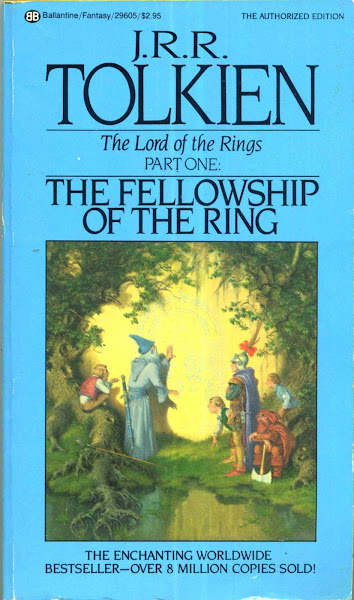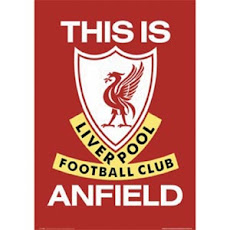Breaking down contrasting matches between Global-Navy
and Loyola-Pachanga
by rick olivares
A football match can be viewed in
different ways.
If you can put the opponent in a deep
hole in the first half with a bunch of goals it sometimes puts one team ahead
before the other can make adjustments at the half. As in any case in any sport
(with a few notable exceptions), the game is won at full time. Germany can
attest to Sweden’s recent come back from 4-0 to forge an incredible 4-4 draw by
fulltime.
Studies done in Europe’s four premier
domestic leagues (Bundesliga, English Premier League, Serie A, and La Liga) show
the value of first half goals. If a team is able to pour in three or four goals
in the first half more often than not, the team came away with the three full
points. Again there are exceptions such as Liverpool’s miracle in Istanbul and
Newcastle’s stunning comeback against Arsenal one year ago.
Loyola figured in another one of those
endgame collapses last night and one has to ask several hard questions. They
scored a late goal in the first half when Byeong Yeong Jeol’s shot off the
second ball beat Pachanga keeper Manuel Staubach. Advantage, Loyola? Yes, but
not too much. A one goal lead isn’t much. But before I get into that, I’ll
tackle the Global-Navy game that was played earlier where Global also scored a
goal right before the halftime whistle. I’ll detail the differences between the
two matches.
Global
4 vs. Navy 0
Global opted to rest its national
players but nevertheless started a strong team. Navy came out to play football
in the first half instead of the rough play that they have been known for. They
stopped the middle and the left midfield with Lyndon Zamora, Adolfo Solatorio
Jr., and Gary Viliran plugging the holes. But they couldn’t stop Global’s right
midfielder Kevin Capolei from his runs and cross from the right flank. But
keeper Benito Rosalia Jr. was excellent as he saved seven shots that were
launched at him.
The problem was Bern Calumpang and Bob
Cabural were unable to clear the ball and Rosalia couldn’t snatch the ball.
Izzo El Habbib stepped in to boot the ball in seconds before the halftime
whistle blew.
Said Loreto Kalalang of Navy at the
half, “We should have not conceded that. Now it changes the game.”
It sure did and the 15-minute halftime
break wasn’t enough to steady the shaken and battered Navy team. When the match
resumed, it was obvious that the dam had burst.
Global plays with two strikers up
front and it’s like picking your poison – Izzo el Habbib and Alex Obiang. Both
are industrious and dangerous. That’s a deadly combo on both counts.
The entry of Jeffrey Christiaens
opened the hitherto ineffective flank and Misagh Bahadoran gave Navy even more
problems as Capolei continued to run up and down the side with abandon. Then
the goals came – Alex Obiang scored on a penalty kick after handball by
Calumpang in the 46th minute. Obiang’s strike four minutes later
made it 3-0 and Capolei – as a reward for all his hard work for the night –
scored on a penalty shot after another Navy handball to make it 4-0 that ended
up as the final scoreline.
Navy never recovered from that goal in
the first half as they looked shaky from the resumption of the game. The goal
also calmed the nerves of Global as they became more relaxed. The gradual entry
of the national players from Christiaens, Bahadoran, Matthew Uy, Demetrius
Omphroy, and Carli de Murga ensured that Global ruled the midfield giving Navy
only opportunistic but uncoordinated counters that never amounted to anything.
The stout defense of the back four – perhaps the best in the league – shut down
Navy that was left to resort to its dirty play in the endgame. There ought to
be a law in this as de Murga was taken down savagely twice in the game while
Stephen Burda nearly took of Bahadoran’s jaw with a wicked elbow had it
connected. There is no room for this kind of play.
One of Global’s best suits is the
industriousness of its players who are always around the ball. They almost never
concede open shots. They double or triple team the opposing midfielders forcing
them to cough up the ball.
In summary, Global seized on their
one-goal lead at the get-go of the second half and it paid immediate dividends
while Navy was trying to compose itself. Oh, yeah. Having the deepest bench in
the league helps.
Loyola
1 vs. Pachanga 2
This was a treat for me. Two of the
greatest goal scorers in recent years for the national team not to mention club
Freddy Gonzales (Kaya and Pachanga) and Phil Younghusband (Loyola) were to
meet. But I knew that it wouldn’t come down to them. For sure they will be
marked. I felt before the game is how they adjusted to that.
The Sparks should have converted many
of their shots in the first half against Pachanga but they misplayed many of
those shots against Manuel Staubach who at times seemed shaky. But I will give
major props to Staubach, the Fil-German who walked into a Pachanga practice and
took the starting spot from Jerome Leung (and to think that he isn’t in shape
yet). He stopped some shots that could have been a goal had it been another
keeper.
There’s a basic rule is shot making
and it’s to never loft or fire highballs at a tall keeper. Staubach is 6’1 or
6’2” and those high crosses won’t do any damage. Either fire grounders at him
or when taking a corner, to make sure that an inswinger is fired at the first
post.
Byeong’s first half goal was off the
second ball and fired low. The near equalizer by Jake Morallo (that was
nullified because of an offside call) was also of the same variety.
The Sparks’ 4-2-3-1 formation gave
Pachanga fits early on but their inability to capitalize on those shots I
wondered might cost them. They are up against a well-coached and well-trained
team. The second half adjustment of Pachanga was simple – with Freddy covered,
he could set up teammates and two, to drop Ousseynou Diop into the midfield to
cover a much slower Mark Hartmann who was raining hell on Staubach.
With Hartmann rendered ineffective
(and Davide Cortina out of the match because of a freak injury sustained in the
early minutes of the game), the supply of balls for Phil became predictable –
James to Phil Younghusband, a tactic that teams have read all too well by now.
I am surprised why it took so long to
introduce Jake Morallo and Anto Gonzales into this match. This was the same
problem during the first leg of the Tampines Rovers game.
In the 70th minute, with
Loyola’s holding midfield in shambles, Freddy Gonzalez sent a back pass to Diop
who had all sorts of space to shoot from 25 yards out. Diop’s rocket went
straight to Loyola keeper Ref Cuaresma but Gonzales filed the opportunity to
memory – there was a vacancy in the spot right before the back four. Five
minutes later in a carbon copy of the pass to Diop, Gonzalez this time found
Ernest Appiah who also launched a howitzer. This one came from the right flank
and some 20-25 yards out and punched the net from the second post. 1-1.
Later in the match, under pressure
from Gonzalez, Min Ho Park sent a backpass to Cuaresma who wasn’t able to get a
solid boot on the ball. He scuffed the shot. Now this is where a game can be
decided. Pachanga attacking mid/striker Ariel Zerrudo knew it was a scuffed
shot and the bounce would be awkward. He raced to a position he thought the
ball would go and he beat the Loyola defender who did not read the same. Before
any defender could close him down, Zerrudo launched a thunder cracker of a shot
from the opposite side of Appiah’s earlier shot. GOOOAAAL! 2-1 Pachanga.
Loyola belatedly sent in Anto Gonzales
who helped reassert ball control for the Sparks but it was too late. Pachanga
had come up with a huge win that saved them from certain elimination in Group C
of cup play (and this handed a massive advantage to Nomads the only unbeaten
team in this group thus far and without a full lineup at that).
Now for the hard questions…
If you do not control the midfield is
having one striker up front a good idea for Loyola?
Who else can play striker up front for
Loyola? Geylang United exposed that in the first round of the 2012 Singapore
Cup.
Why is Jake Morallo continuously kept
on the bench? What a waste of talent.
If PJ Fadrigalan not left after the
first half (he had to leave work along with Alex Elnar), would he have been
able to cover Zerrudo’s game winning run from the left flank?
What does this loss say about Loyola's collective state of mind?
The UFL Cup got all the more
interesting. So we gotta watch.
-------------
O nakaw na ng analysis.









game on.
ReplyDeletethe root cause of all - loyola's coaching staff. ask the local players, trust me they know the answers to your "hard" questions.
ReplyDeleteYeah yeah yeah.
Delete